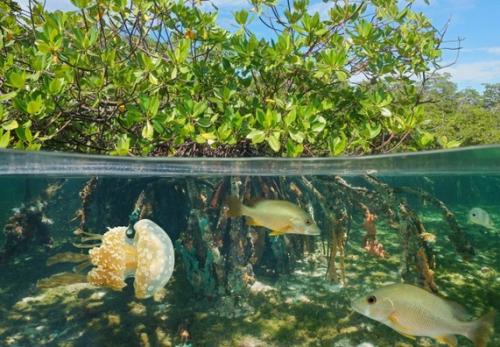How coastal shrimp farming can support mangrove regeneration

How coastal shrimp farming can support mangrove regeneration
Historically, issues such as logging and charcoal production, among others, all contributed to mangrove loss in Asia. More recently, shrimp farming has also played a role in this loss, alongside other factors such as agriculture. Today, the direct conversion of mangroves to coastal shrimp ponds is greatly reduced, but still continues,particularly in parts of Indonesia and Vietnam. Meanwhile, mangrove losses to other uses and the sea continues in many countries.
Protecting the remaining mature mangrove forests is a priority to preserve the vital and well-established services they provide. In locations where mangroves continue to be lost to aquaculture, policies to protect these habitats and improve aquaculture planning should be strengthened along with enforcement.
At the same time, the shrimp industry and the shrimp supply chain can go beyond protecting what remains, to help to bring this vital habitat back. Across Asia, both abandoned and active aquaculture ponds are providing the setting for mangrove recovery to take place.
Published by Sustainable Fisheries Partnership
